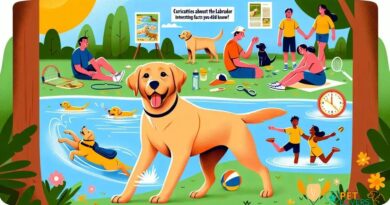What is Worried
What is Worried: Understanding the Emotion
Worried is an emotional state characterized by feelings of anxiety, concern, or unease about a potential outcome or situation. This feeling can manifest in various ways, including physical symptoms such as increased heart rate, sweating, or restlessness. Understanding what it means to be worried is crucial, especially when it comes to our furry friends, as they can also experience similar emotions.
The Signs of a Worried Dog
When dogs are worried, they may exhibit specific behaviors that indicate their emotional state. Common signs include excessive barking, pacing, hiding, or even destructive behavior. It’s essential for dog owners to recognize these signs to provide the necessary comfort and support to their pets. A worried dog may also show changes in appetite or sleep patterns, which can further indicate their emotional distress.
Common Triggers for Worry in Dogs
There are numerous triggers that can cause a dog to feel worried. These can range from loud noises, such as thunderstorms or fireworks, to changes in their environment, like moving to a new home or the arrival of a new family member. Additionally, separation anxiety is a prevalent issue that can lead to significant worry in dogs when they are left alone for extended periods.
How to Help a Worried Dog
Helping a worried dog involves understanding their specific triggers and providing a safe and comforting environment. Techniques such as creating a designated safe space, using calming products like anxiety wraps or pheromone diffusers, and practicing desensitization can be effective. Engaging in regular exercise and mental stimulation can also help alleviate worry by providing an outlet for excess energy and stress.
Recognizing the Difference Between Worry and Fear
While worry and fear are often used interchangeably, they are distinct emotions. Worry is typically associated with anticipation of a future event, while fear is a response to an immediate threat. Understanding this difference is vital for dog owners, as it can influence how they respond to their pet’s behavior. A worried dog may need reassurance and support, whereas a fearful dog may require a different approach to feel safe.
The Role of Training in Reducing Worry
Training plays a significant role in helping dogs manage their worry. Positive reinforcement techniques can help build a dog’s confidence and reduce anxiety associated with specific triggers. Teaching commands and engaging in obedience training can provide structure and predictability, which can be comforting to a worried dog. Consistency in training is key to fostering a sense of security.
When to Seek Professional Help
If a dog’s worry escalates to the point where it affects their quality of life, seeking professional help from a veterinarian or a certified animal behaviorist may be necessary. These professionals can provide tailored strategies and, if needed, recommend behavioral therapies or medications to help manage the dog’s anxiety. Early intervention is crucial to prevent further complications.
The Importance of Socialization
Socialization is a critical aspect of a dog’s development and can significantly impact their ability to cope with worry. Exposing dogs to various environments, people, and other animals in a controlled manner can help them build confidence and reduce anxiety. A well-socialized dog is often better equipped to handle new experiences without becoming overly worried.
Understanding Your Dog’s Body Language
Being attuned to your dog’s body language is essential in recognizing when they are worried. Subtle cues such as a tucked tail, flattened ears, or avoiding eye contact can indicate discomfort or anxiety. By learning to interpret these signals, dog owners can respond appropriately and provide the necessary support to help their pets feel more secure.




